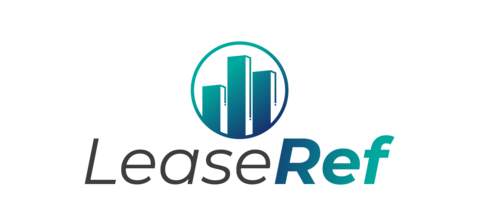A single-tenant triple net lease (STNL) isn’t just a rental agreement-it’s a commitment. Once you sign, you’re responsible for more than just rent. Property taxes, insurance, and maintenance? All on you. That’s why landlords love these leases. The question is: should you?
Before we get ahead of ourselves, let’s define exactly what a single-tenant triple net lease is first. A single-tenant triple net lease (STNL) a commercial lease agreement where one tenant occupies the entire property and is responsible for rent, property taxes, insurance, and maintenance expenses. This makes it a popular choice among several types of businesses:
These business (and many others) often require custom buildouts, specific branding requirements, and more general control over the space itself, so a single-tenant NNN lease can make sense.
How STNL Leases Work
Since a tenant in single-tenant triple net lease (STNL) pays rent along with property taxes, insurance, and maintenance costs, the landlord collects rent without managing expenses, making this a common (and appealing!) structure for investors.
Businesses choose STNL leases because they provide full control over the property. Unlike multi-tenant buildings, where costs and rules are shared, an STNL tenant can modify the space, set operating hours, and avoid landlord interference.
While STNL leases offer freedom, they also shift financial risk onto the tenant. Property tax hikes, rising insurance costs, and vague maintenance clauses can lead to unexpected expenses that businesses don’t anticipate. Without the right protections, what seems like a stable lease can quickly become a financial liability.
Landlord vs. Tenant Responsibilities
Not every STNL lease is structured the same way. In some cases, the landlord retains responsibility for structural repairs, such as roofing, foundation work, or exterior maintenance. Other leases shift these costs entirely to the tenant. A lease should clearly define these responsibilities to prevent disputes later.
When a property changes hands, local tax authorities often reassess its value, leading to a sharp tax increase. Since the tenant covers property taxes under an STNL lease, they’re the ones stuck with the bill. Landlords have no financial reason to dispute reassessments, so costs can spiral out of control.
Imagine a restaurant owner that signed a lease with an $8,000 annual tax bill. The next year, the landlord sold the property for double its original purchase price, triggering a reassessment. The new tax bill jumped to $18,500 per year, and because the lease didn’t include a cap on tax pass-throughs, the tenant had no choice but to pay the difference. Yikes.
STNL tenants expect to handle day-to-day maintenance, but lease wording can shift far greater costs onto them. Some leases make tenants responsible for all repairs, including major structural elements like the roof, foundation, or HVAC system.
The difference between a “NNN lease” and an “absolute NNN lease” is significant, and failing to clarify responsibilities in writing can lead to unexpected five-figure expenses.
Landlords control the insurance policy, but the tenant pays the premiums. This structure creates an imbalance, to say the least. Landlords often select policies that benefit them, not the tenant. Some bundle multiple properties into a single policy, spreading risk across locations the tenant has nothing to do with. Others over-insure the property, driving up costs.
Without lease provisions requiring cost transparency, a tenant may never know if they’re paying a fair price or subsidizing unrelated risks.
Common Area Maintenance (CAM) fees should cover shared property expenses, but many STNL leases leave these terms vague. Without clear definitions and caps, landlords can pass through nearly any cost. Some tenants have seen CAM fees increase 30% in one year, only to find out they were paying for new landscaping, signage, and security cameras that primarily benefited other tenants.
A lease without safeguards allows landlords to add administrative fees, capital expenditures, or unexpected maintenance costs with no notice.
STNL vs. Other Lease Types
A single-tenant triple net lease (STNL) places full financial responsibility on the tenant, but it’s not the only lease structure available. In a gross lease, for example, the landlord covers operating expenses, and the tenant pays a fixed rent. A modified gross lease splits costs, allowing tenants to cover certain expenses while the landlord absorbs others.
The key difference with an STNL lease is the level of control. Tenants gain independence but give up the financial protections that other leases provide. This tradeoff makes STNL a better fit for businesses with stable, long-term plans, while companies that need predictable expenses often prefer other structures.
| Lease Type | Who Pays Expenses? | Tenant Control | Best For |
|---|---|---|---|
| Gross Lease | Landlord covers all costs | Low | Offices, co-working, small retail |
| Modified Gross Lease | Costs are split between tenant & landlord | Moderate | Multi-tenant retail, medical offices |
| STNL Lease | Tenant covers all costs | High | Large retailers, restaurants, distribution centers |
Final Check: Length and Finances
A single-tenant triple net lease (STNL) can provide stability for a business, but not every lease is a good deal. A poorly structured agreement can create financial risks that aren’t obvious at first. Before signing, tenants should evaluate both the immediate costs and the long-term implications.
Lease Length and Future Value
The length of the lease impacts the value of the property and the financial security of both parties. The closer a lease gets to expiration, the more uncertain the future becomes. If a tenant’s lease has only a few years left, the landlord must consider whether they will renew or if they will need to find a new tenant. This uncertainty affects projected cash flow and the property’s overall worth.
Consider two identical properties, one with a seven-year lease and the other with 15 years remaining. Even if the rent is the same, the longer lease is more valuable because it provides stability. With a shorter lease, both the landlord and tenant must factor in the possibility of renegotiation, relocation, or vacancy.
Financial Risk if the Tenant Leaves
A key risk with an STNL lease is that the entire property depends on one tenant. If that business leaves, the building loses value instantly. Unlike multi-tenant properties, where rental income comes from multiple sources, an STNL property either has cash flow or it doesn’t.
If the tenant vacates, the property reverts to its “dark value,” which represents what it’s worth without an active lease. Even without a tenant, the owner must still pay property taxes, insurance, and any outstanding debt service. This is why tenant creditworthiness is critical—if a business struggles financially, it increases the risk of nonpayment or early closure.
Make the Best Move, For You
An STNL lease gives tenants full control over a property, but that control comes with financial responsibility. Lease length, tenant obligations, and financial stability all play a role in whether an STNL lease is a good fit. A well-structured agreement can provide long-term stability, but a poorly negotiated lease can lead to unexpected costs. Make sure to review the terms, or better yet, get a real estate attorney to help you make the best decision!


![The Role of Estoppel Certificates in CRE [TEMPLATE]](https://www.leaseref.com/wp-content/uploads/2024/11/Three-people-looking-over-estoppel-certificate_500X1000.jpg)
